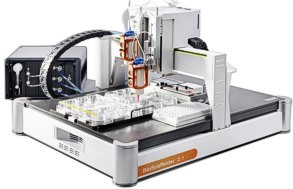It all starts with (or continues through) education. We just reported that in the US, Makerbot is investing in creating MakerBot Innovation Centers for college students to learn about new advanced manufacturing processes. Now in Holland, a country that (along with the enthusiasm for consumer 3D printing) has already been investing heavily in biocompatible 3D printed products for the Health sector, the University of Utrecht (UMC) has announced an extremely ambitious program related to organ and living tissue bioprinting (which seems to be a hot subject these days).

Before we tell you all about how the structure will work (which is quite incredible in and of itself), you should probably watch the video below in which Dr. Wouter Dhert, one of the two faculty representatives for this project (together with Dr. Jos Malda) illustrates in incredibly clear terms how the process of bioprinting bones and cartilages will work.
Another aspect that is particularly important in relation to this project is – as we mentioned earlier – its educational implications: Utrecht University, along with Universität Würzburg (Germany), Queensland University of Technology and the University of Wollongong (both in Australia), have announced a new specific study program, the first of its kind, named BIOFAB (Biofabrication Training for Future Manufacturing), which will start in 2014 and combine with the current Master’s program in Regenerative Medicine & Technology.
Students will be able to access the new experimental facility, the only one in the world at a public level, and focus on topics such as orthopaedic applications and healing of cartilage and bones (does anyone think there will be a demand for that? Nah, I don’t know anyone who suffers from back or knee pain… Actually I suffer from both). “Instead of waiting until a joint is almost completely worn out,” said Dr. Malda, “we can study how to simulate or stimulate the body’s natural healing process with a piece of bone or cartilage that has been produced layer by layer by a bioprinter.”
The main issue is that of thermoforming. Plastics can be heated and melted, metals can be made into powder and sintered: organic tissues cannot. “By adjusting the printing temperature and the use of a special ‘bioink’ developed in Utrecht,” Dr. Malda continued, “it is possible to print 3D structures using living cells. The fact that tissue structures must not only be three dimensional, but also perform a function, makes it more complex.”

The facility will be equipped with a SysEng Bioscaffolder bioprinter (with printheads for both low temperature gels and high temperature thermoplastics), a few Dutch-made Ultimaker standard FDM 3D Printers, an integrated bioprinter setup (with multiple printheads) and a high resolutions stereolithography apparatus. Can anyone imagine a better place to work, learn, discover and create …. not to mention, potentially heal?




